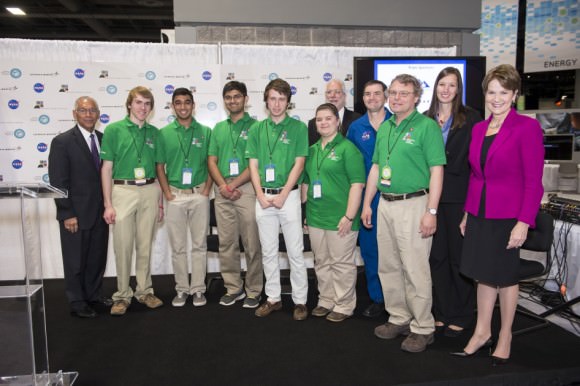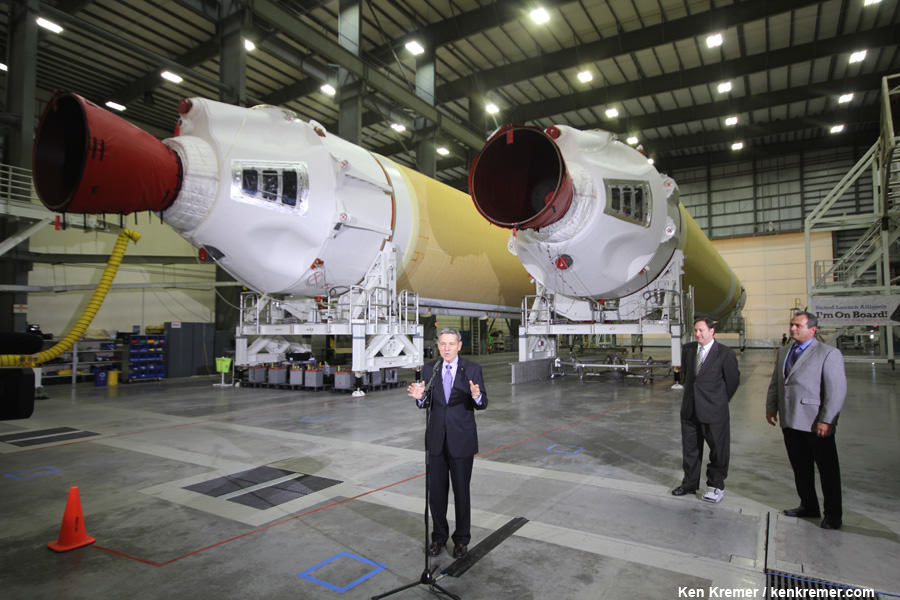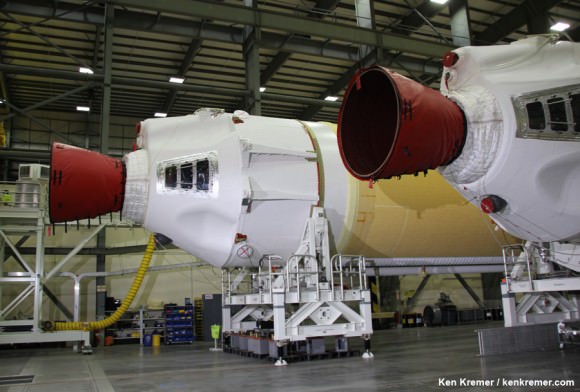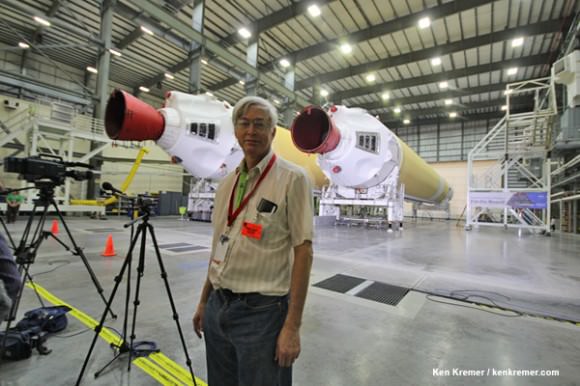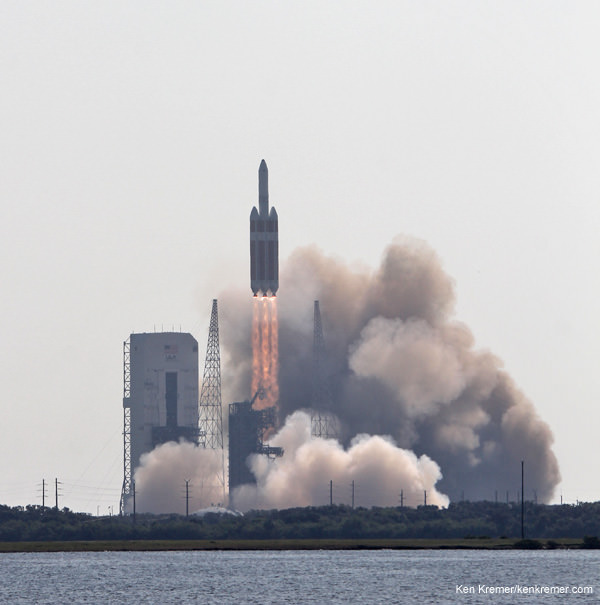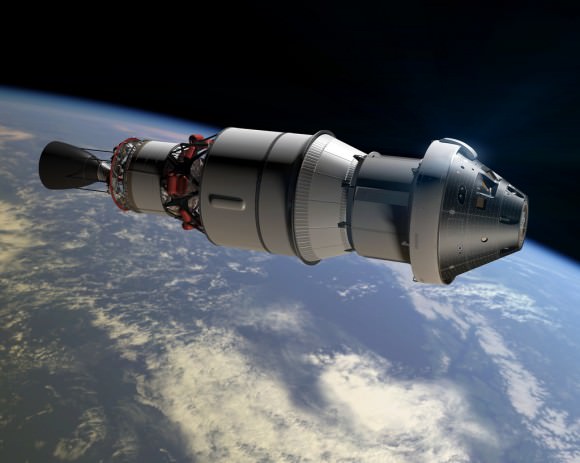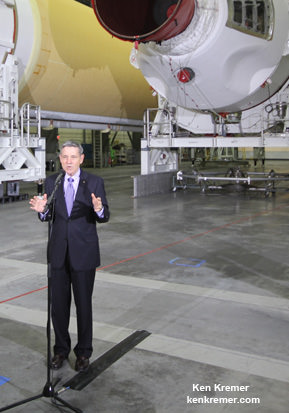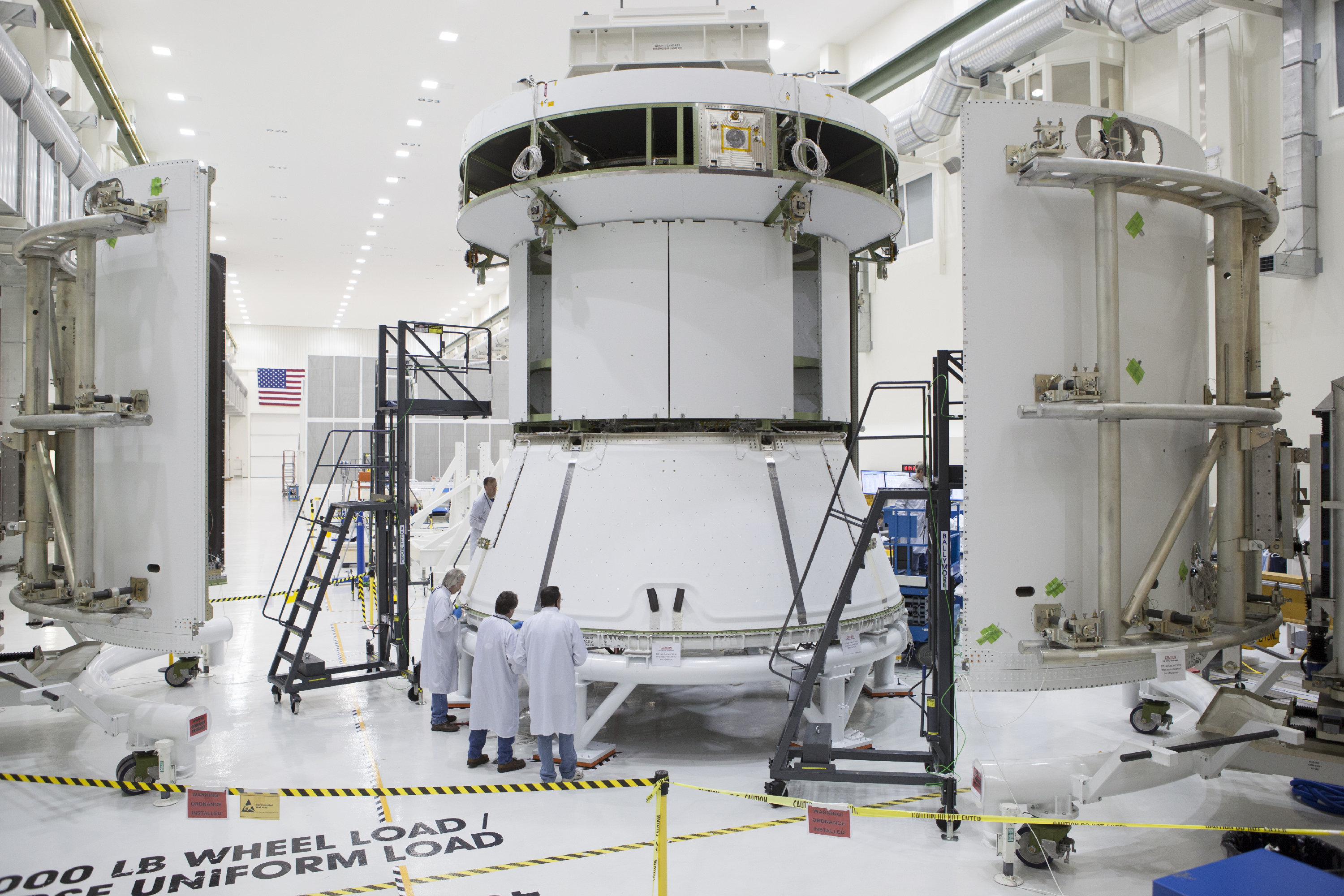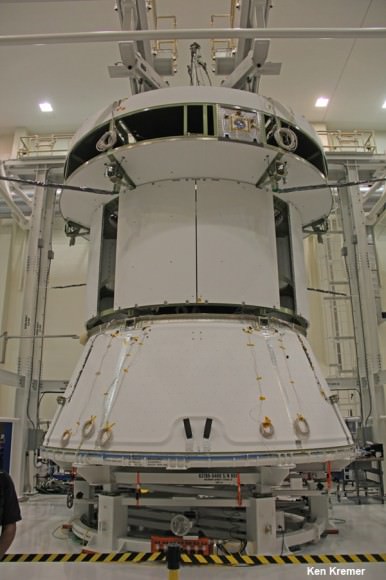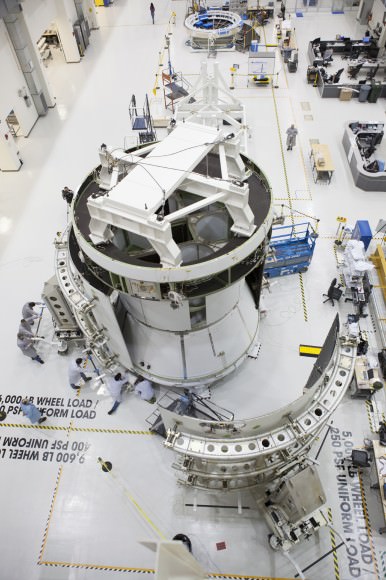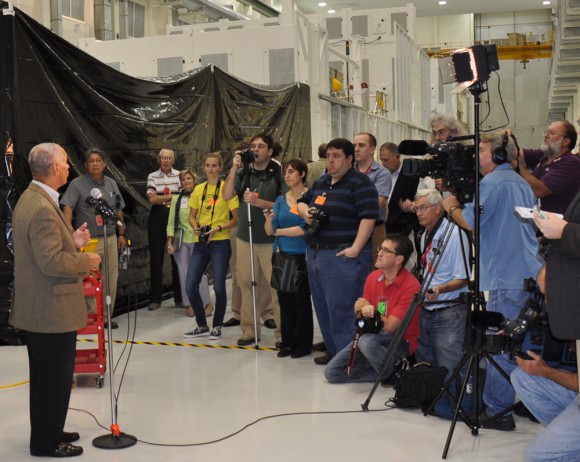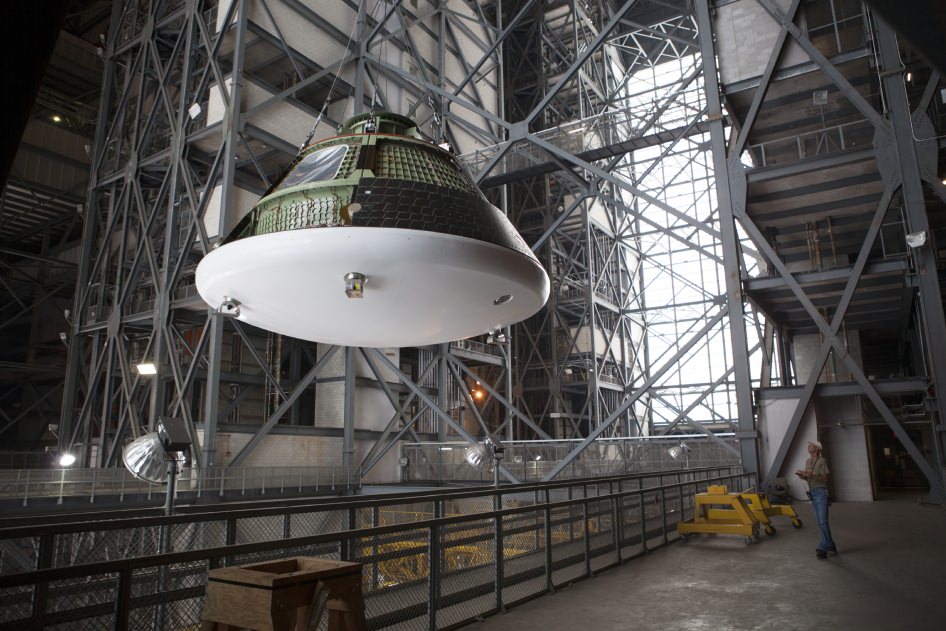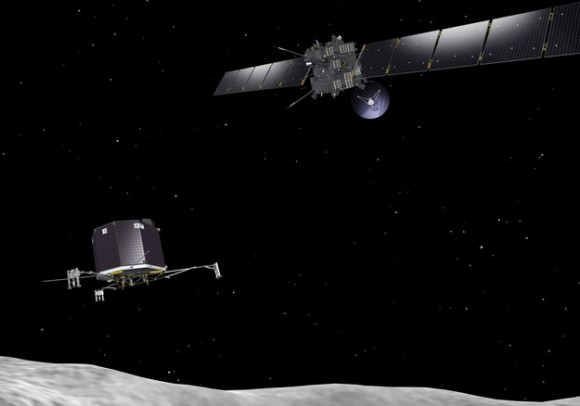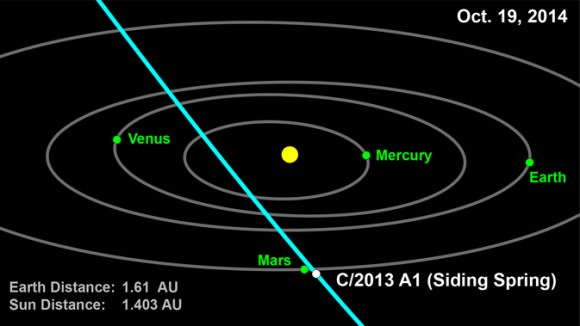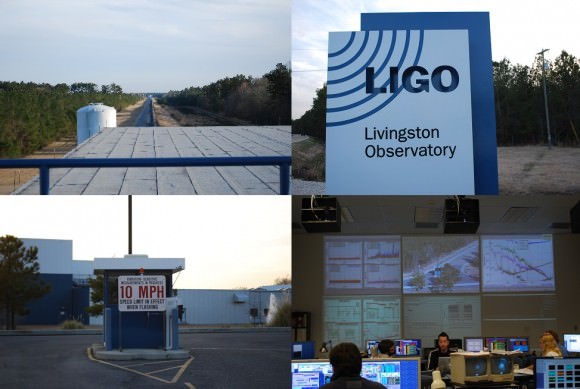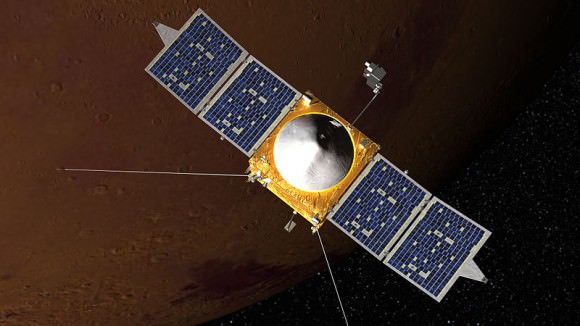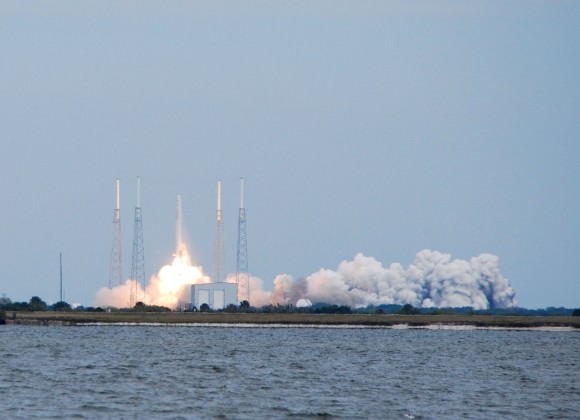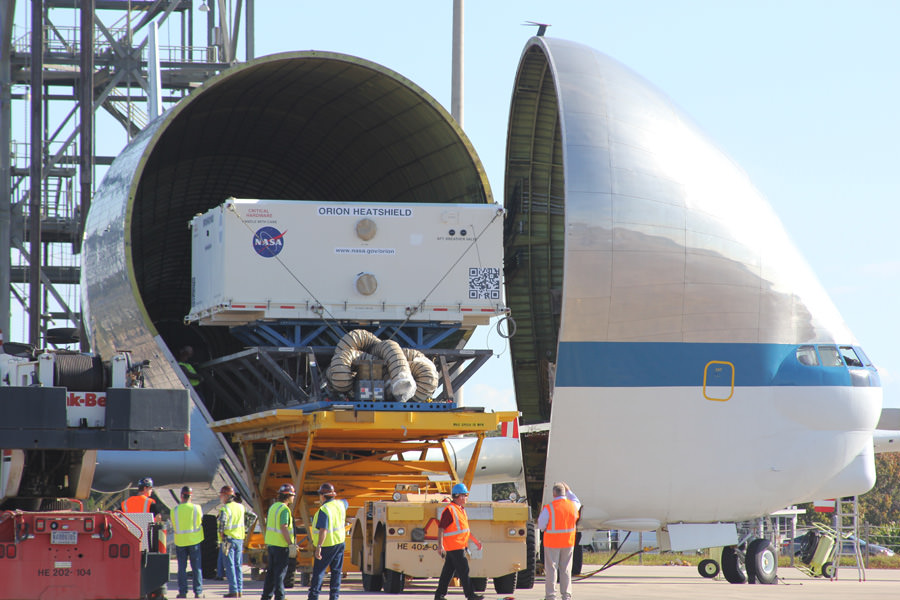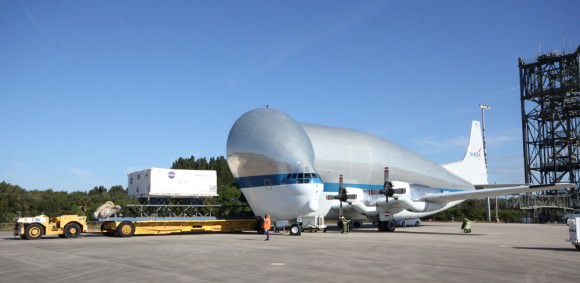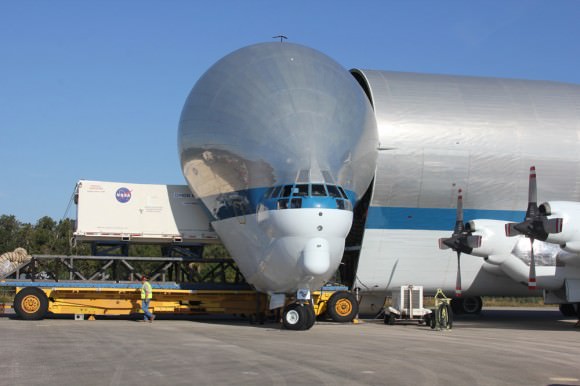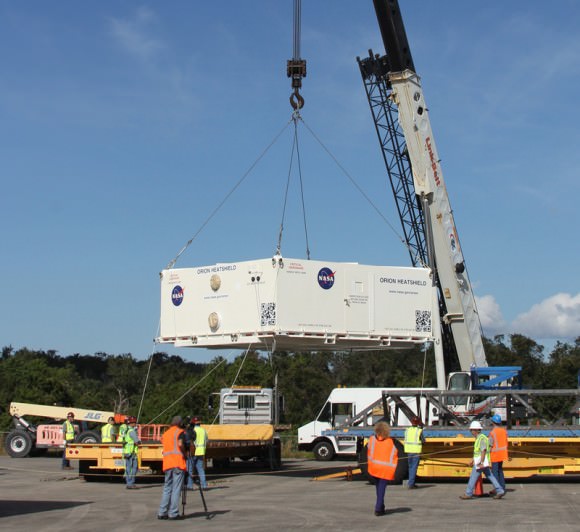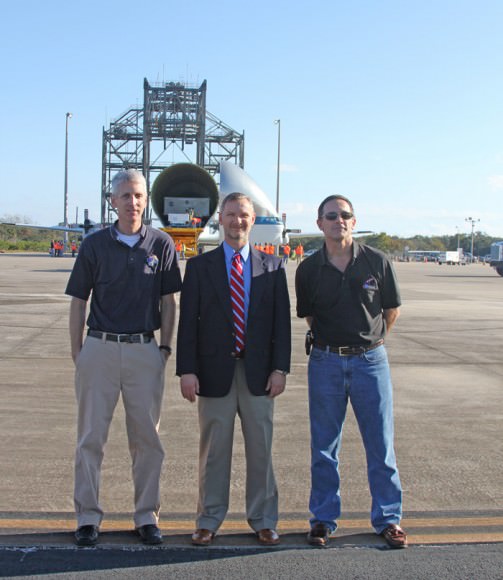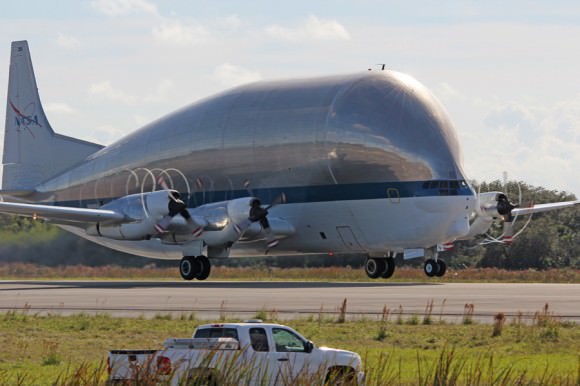Artist concept of NASA’s Space Launch System (SLS) 70-metric-ton configuration launching to space. SLS will be the most powerful rocket ever built for deep space missions, including to an asteroid and ultimately to Mars. Credit: NASA/MSFC
Story updated[/caption]
After a thorough review of cost and engineering issues, NASA managers formally approved the development of the agency’s mammoth heavy lift rocket – the Space Launch System or SLS – which will be the world’s most powerful rocket ever built and is intended to take astronauts farther beyond Earth into deep space than ever before possible – to Asteroids and Mars.
The maiden test launch of the SLS is targeted for November 2018 and will be configured in its initial 70-metric-ton (77-ton) version, top NASA officials announced at a briefing for reporters on Aug. 27.
On its first flight known as EM-1, the SLS will also loft an uncrewed Orion spacecraft on an approximately three week long test flight taking it beyond the Moon to a distant retrograde orbit, said William Gerstenmaier, associate administrator for the Human Explorations and Operations Mission Directorate at NASA Headquarters in Washington, at the briefing.
Previously NASA had been targeting Dec. 2017 for the inaugural launch from the Kennedy Space Center in Florida – a slip of nearly one year.
But the new Nov. 2018 target date is what resulted from the rigorous assessment of the technical, cost and scheduling issues.
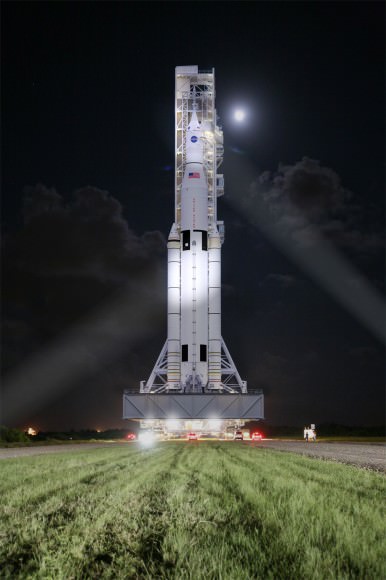
The decision to move forward with the SLS comes after a wide ranging review of the technical risks, costs, schedules and timing known as Key Decision Point C (KDP-C), said Associate Administrator Robert Lightfoot, at the briefing. Lightfoot oversaw the review process.
“After rigorous review, we’re committing today to a funding level and readiness date that will keep us on track to sending humans to Mars in the 2030s – and we’re going to stand behind that commitment,” said Lightfoot. “Our nation is embarked on an ambitious space exploration program.”
“We are making excellent progress on SLS designed for missions beyond low Earth orbit,” Lightfoot said. “We owe it to the American taxpayers to get it right.”
He said that the development cost baseline for the 70-metric ton version of the SLS was $7.021 billion starting from February 2014 and continuing through the first launch set for no later than November 2018.
Lightfoot emphasized that NASA is also building an evolvable family of vehicles that will increase the lift to an unprecedented lift capability of 130 metric tons (143 tons), which will eventually enable the deep space human missions farther out than ever before into our solar system, leading one day to Mars.
“It’s also important to remember that we’re building a series of launch vehicles here, not just one,” Lightfoot said.
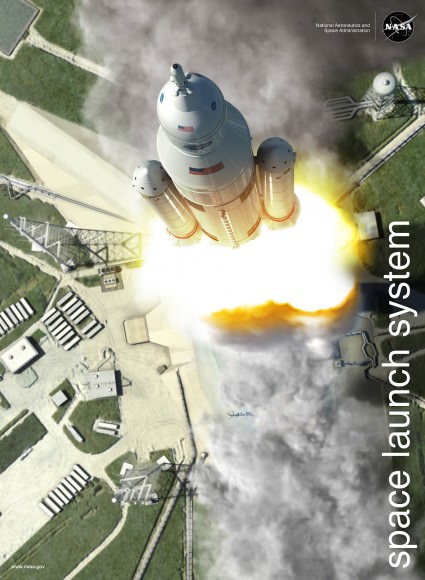
Lightfoot and Gerstenmaier both indicated that NASA hopes to launch sooner, perhaps by early 2018.
“We will keep the teams working toward a more ambitious readiness date, but will be ready no later than November 2018,” said Lightfoot.
The next step is conduct the same type of formal KDP-C reviews for the Orion crew vehicle and Ground Systems Development and Operations programs.
The first piece of SLS flight hardware already built and to be tested in flight is the stage adapter that will fly on the maiden launch of Orion this December atop a ULA Delta IV Heavy booster during the EFT-1 mission.
The initial 70-metric-ton (77-ton) version of the SLS stands 322 feet tall and provides 8.4 million pounds of thrust. That’s already 10 percent more thrust at launch than the Saturn V rocket that launched NASA’s Apollo moon landing missions, including Apollo 11, and it can carry more than three times the payload of the now retired space shuttle orbiters.
The core stage towers over 212 feet (64.6 meters) tall with a diameter of 27.6 feet (8.4 m) and stores cryogenic liquid hydrogen and liquid oxygen. Boeing is the prime contractor for the SLS core stage.
The first stage propulsion is powered by four RS-25 space shuttle main engines and a pair of enhanced five segment solid rocket boosters (SRBs) also derived from the shuttles four segment boosters.
The pressure vessels for the Orion crew capsule, including EM-1 and EFT-1, are also being manufactured at MAF. And all of the External Tanks for the space shuttles were also fabricated at MAF.
The airframe structure for the first Dream Chaser astronaut taxi to low Earth orbit is likewise under construction at MAF as part of NASA’s commercial crew program.
The first crewed flight of the SLS is set for the second launch on the EM-2 mission around the 2020/2021 time frame, which may visit a captured near Earth asteroid.
Stay tuned here for Ken’s continuing Earth and Planetary science and human spaceflight news.

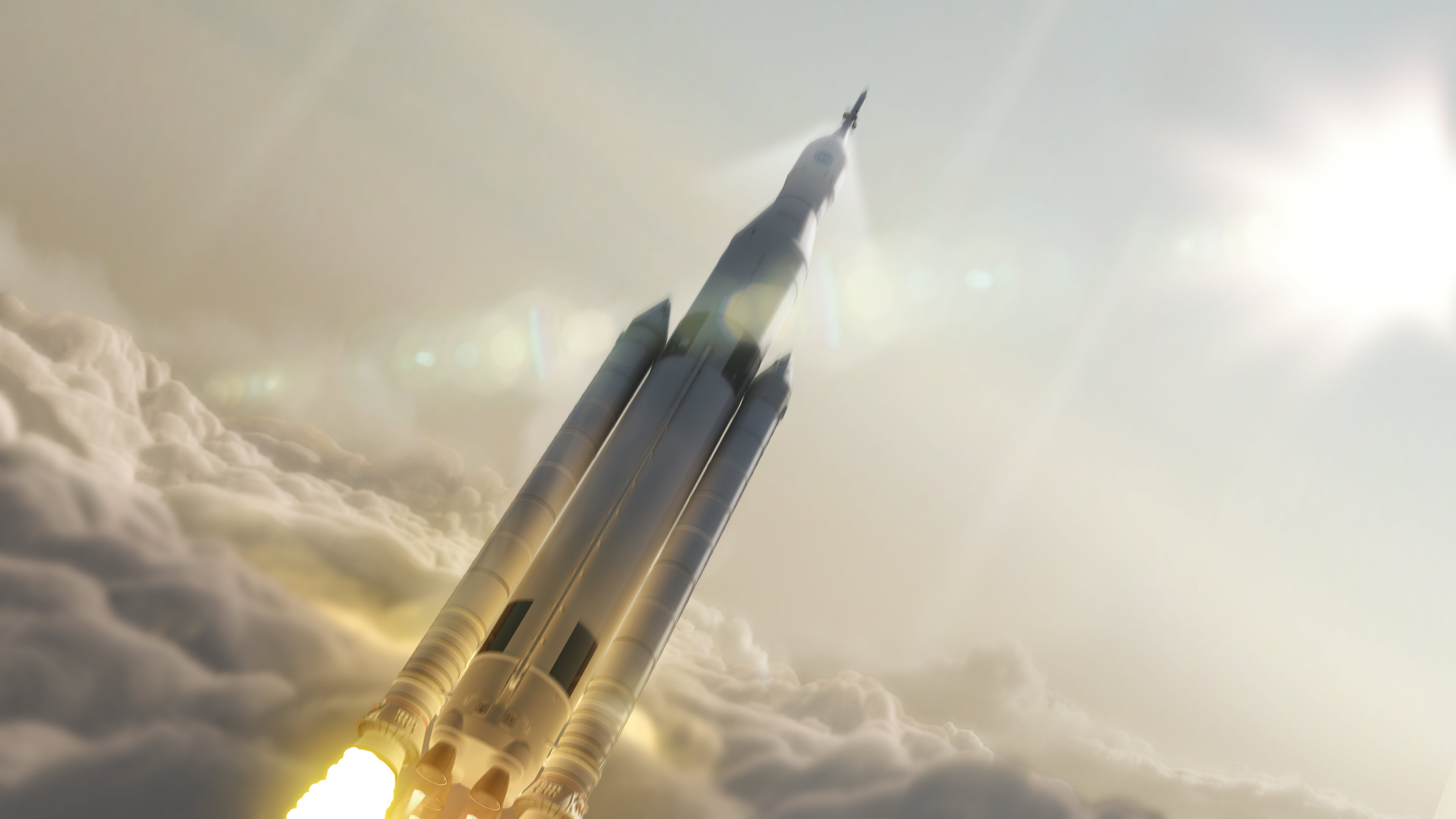
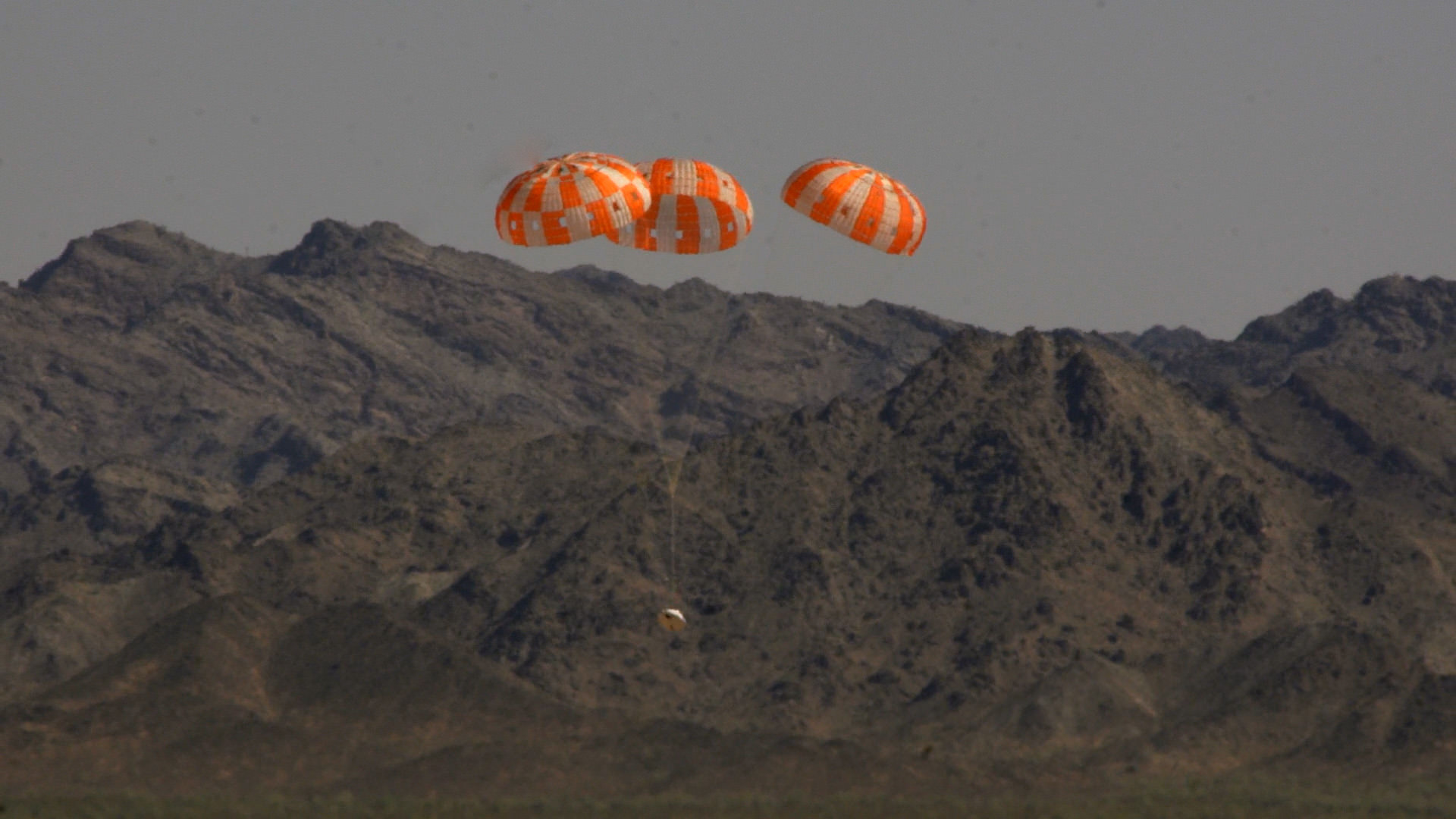
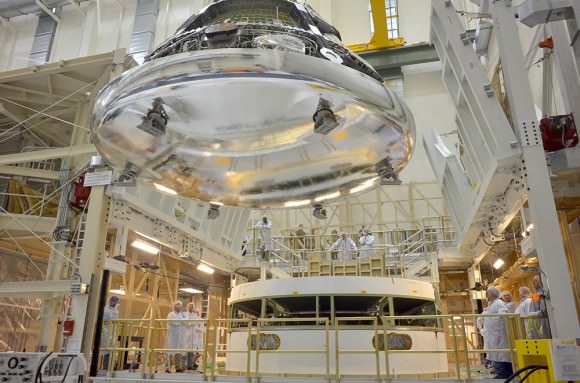
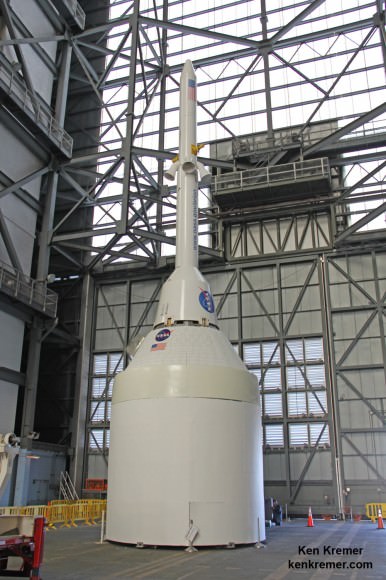
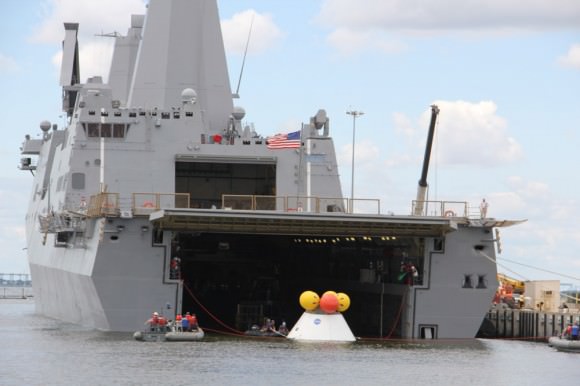

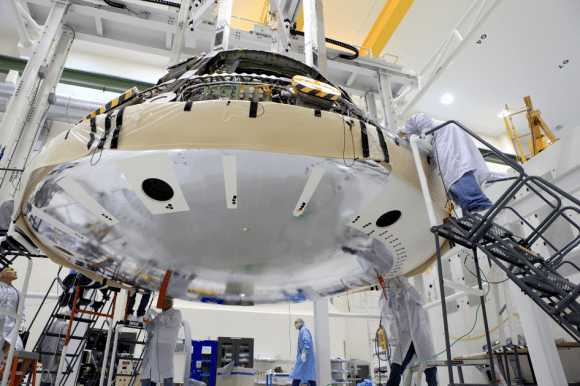
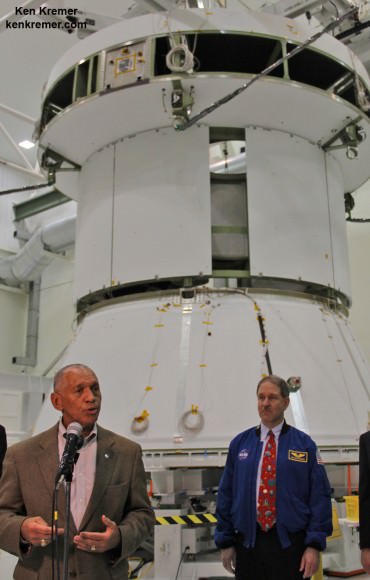
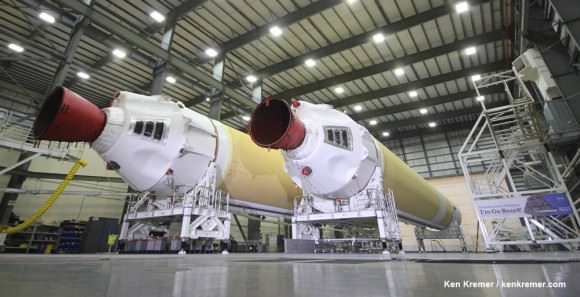
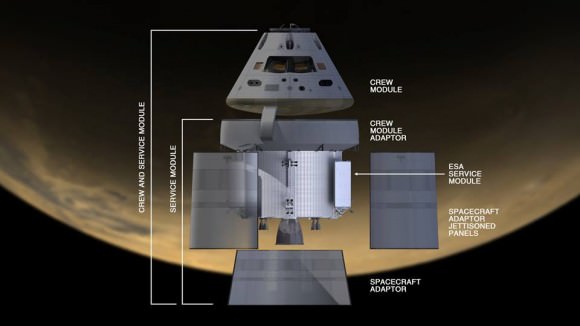
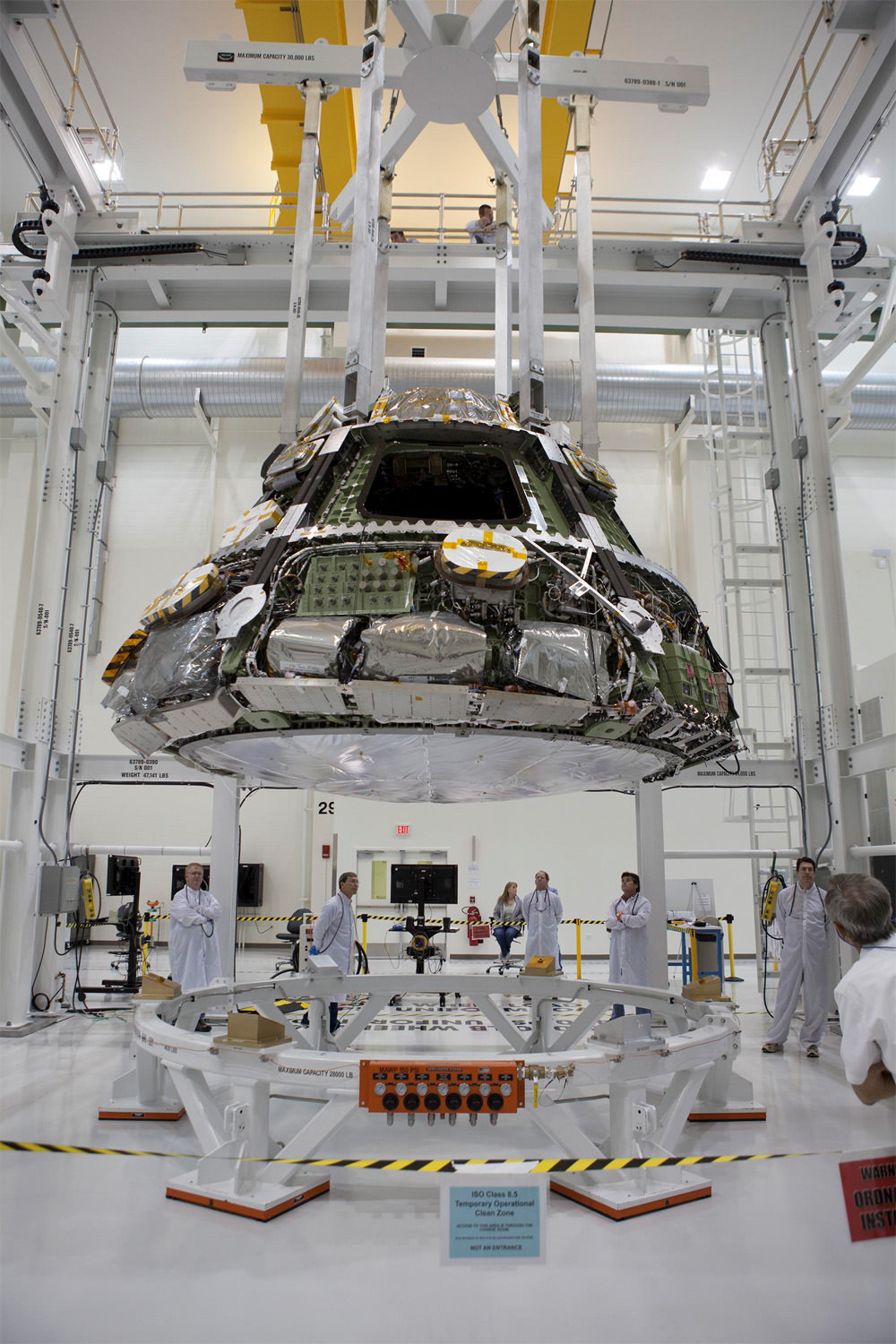
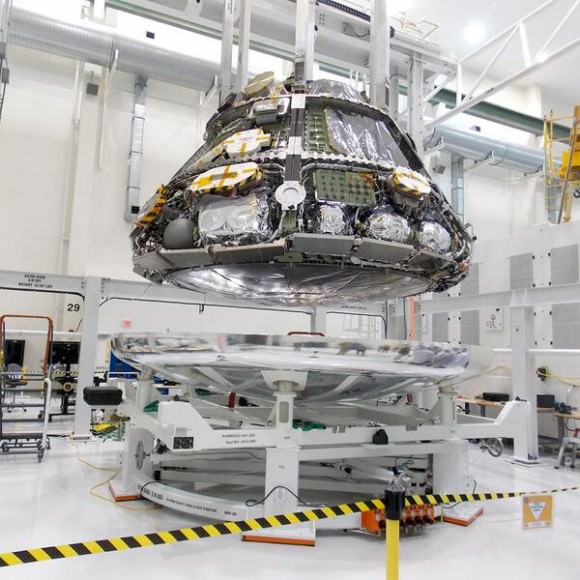
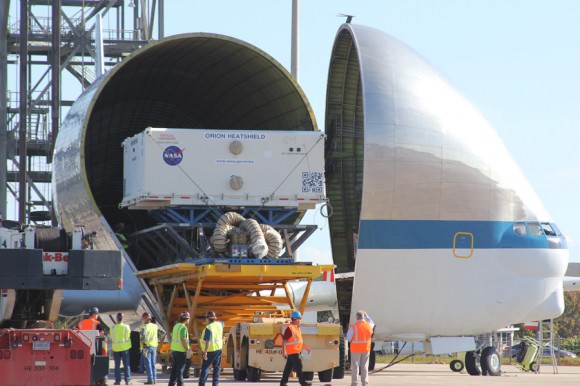
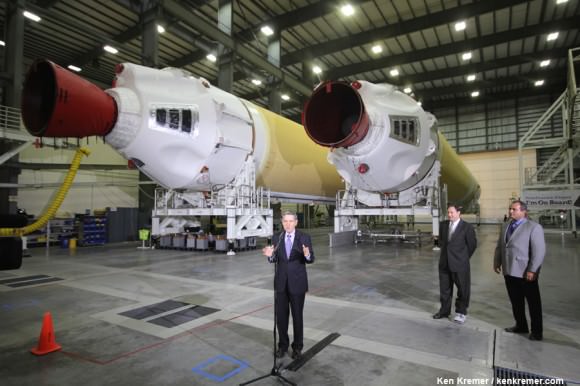
 Delta 4 Heavy rocket and super secret US spy satellite roar off Pad 37 on June 29, 2012 from Cape Canaveral, Florida. NASA’s Orion EFT-1 capsule will blastoff atop a similar Delta 4 Heavy Booster in December 2014. Credit: Ken Kremer- kenkremer.com[/caption]
Delta 4 Heavy rocket and super secret US spy satellite roar off Pad 37 on June 29, 2012 from Cape Canaveral, Florida. NASA’s Orion EFT-1 capsule will blastoff atop a similar Delta 4 Heavy Booster in December 2014. Credit: Ken Kremer- kenkremer.com[/caption]
